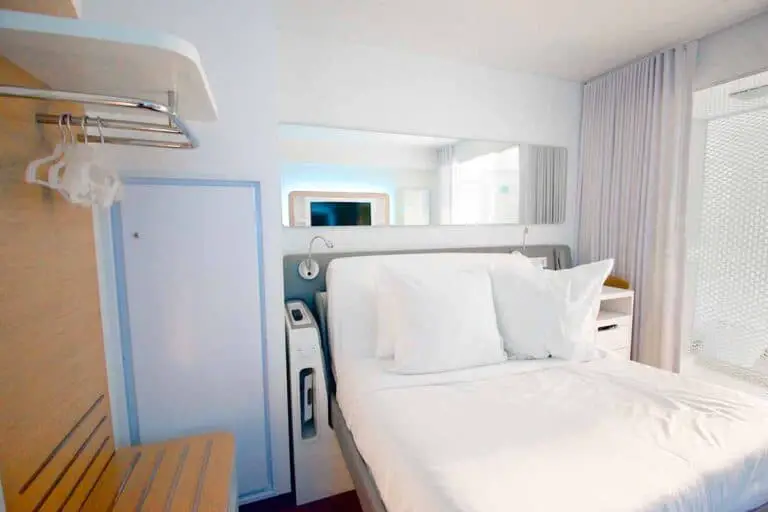Why Is IKEA So Expensive Now? (Top 12 Reasons Explained)
Prices in Ikea seem to be going up constantly. Why?
7 Reasons for Increasing Prices at IKEA
We live in inflationary times with a global marketplace for raw materials and shipping.
The main factors driving price rises in Ikea include:
#1 Increasing Energy Costs
Manufacturing and delivery of Ikea’s stock require energy. When energy is in short supply, the price of manufacturing and transport rises as competition increases.
Ikea faces increases in costs of manufacture and delivery, and these costs pass to the customer with higher prices.
Global trade has many advantages, but weaknesses mean an issue in one part of the supply chain impacts everyone.
#2 Increasing Material Costs
Forest fires and floods devastate people’s lives, but they also wipe out the raw materials (timber) necessary for furniture production.
Other factors impacting raw materials in the Ikea supply chain include high oil prices driving up the cost of production of plastics and armed conflict stopping the trade in some essential raw materials.
Ikea’s mission is to move its designs into using renewable and recyclable materials.
Initially, the production of these materials has a premium cost, and there are limited resources with competition for priority.
#3 Perfect Storm
Recent years have provided a perfect storm of events that combine to disrupt the production and movement of goods.
Forest fires in North America, a global pandemic, labor disputes in ports, and a container ship stuck in the Suez Canal mean the hits keep coming. Each event is disruptive but, in combination, is devastating to regular trade, and the impacts last for years, not days.
Global trade means long supply chains and vulnerability to single events.
#4 Higher Distribution Costs
The expense of moving goods and raw materials is increasing.
Again, a combination of factors – shortage of truck drivers, port closures, and lack of shipping containers means that demand for transportation grows with competing needs. Higher demand and a restricted supply mean increasing prices.
Online deliveries attract a higher cost, which falls disproportionally on customers with smaller orders. A fixed distribution cost for small deliveries is disproportionately high compared to the value of the goods.
Driving to a large physical Ikea store is more expensive because fuel costs are rising. Most people will now only make the journey if they have several items to pick up and know that these are in stock, as several reasons can put Ikea products out of stock.
Fortunately, Ikea is meticulous in keeping its online inventory current.
#5 High Demand
A rapid increase in home working drives demand for desks and storage, and restocking the empty shelves requires increased stock production.
Although you expect economies of scale, material, and other costs are higher, producing replacement stock costs more, and some popular stock items have rising costs.
High demand matches rising prices both in-store and in the second-hand market.
#6 Budget Expectations
Ikea has a reputation for being the budget choice. Ikea produces a range of furniture items in a range of budgets.
Some Ikea items are more expensive than similar items in other stores, and some are less.
When you shop for a new wardrobe, you have a style and budget in mind. If you find the Ikea wardrobe of your choice exceeds your budget expectations, you may ask yourself, why is Ikea so expensive?
But when you compare the price to other outlets, you may find that relatively Ikea is not so expensive. When making price comparisons, you must compare a similar quality of materials and construction.
#7 Inflationary Times
The definition of inflation is rising prices.
It has been a while since the last inflationary times, and a generation is unfamiliar with how rapidly the cost of goods and services can outstrip wages and salaries.
Ikea faces rising production and shipping costs, which push up the prices of goods in store relative to the same goods last year or even last month.
Your income is unlikely to rise with inflation, so your purchasing power decreases, and everything feels expensive, including Ikea furniture.
5 Reasons Why Ikea Shipping Costs Are Expensive
Ikea is a global retailer and shares the pain of rising distribution costs.
#1 Increasing Fuel Costs
Moving raw materials and finished goods requires fuel for trucks and ships.
Rising fuel prices are part of the new reality, and the reasons include:
- Armed conflict – geopolitical unrest can mean substituting fuel supplies with pricier alternatives.
- Developing nations have an increasing demand for fuel.
- Decrease in production of crude oil.
- Increasing general demand by domestic consumers.
The crude oil market is tightly controlled, but demand and price fluctuate.
Concerns regarding climate change mean many oil producers are cautious about the expansion of production and have supply chain issues in getting hold of equipment and labor.
Cargo ships use heavy fuel oil – the cheapest and dirtiest. There are pilot schemes to reduce the shipping industry’s use of dirty fuel, but these will result in higher shipping costs for everyone.
Plus, realistically, there are no practical alternatives for super-sized cargo ships.
#2 Shipping Containers
Most goods and raw materials spend some time in shipping containers.
In an ideal world, China sends filled shipping containers to the US, and the US empties and refills those containers for a return trip. But there is an imbalance in trade between China and the US.
Filled shipping containers arrive in the US ports, but not all those containers make the return trip. A shipping container shortage results because the necessary containers are in the wrong ports.
Increasing steel prices and a shortage of raw materials mean the production of new shipping containers is more expensive. Plants in China (where nearly all shipping containers originate) are reluctant to increase the scale of production as they expect the current shortage to subside.
Additionally, shipping containers are in demand for other uses like land storage, internal country transport, disaster relief, and modular architecture.
The result of misaligned trade balances and alternative uses is a global shortage of shipping containers pushing the price of shipping Ikea stock from manufacturer to store.
#3 Labor Issues
Moving goods and raw materials are not fully automated, requiring skilled workers to operate the ports and drive the trucks.
Globally there is a shortage of truck drivers because a career spent in long-distance haulage has lost its attraction to the younger generation.
Current truckers are retiring without replacement, and companies compete to attract the few remaining truck drivers available, and it will be time before new drivers qualify.
Labor disputes in ports result in delays and additional costs for shipping companies. These disputes delay the smooth passage of stock to stores and can result in empty shelves.
Food supplies are prioritized over furniture and can increase the costs for Ikea shipments.
#4 Port Upgrades
The trend is for larger cargo ships, and some weigh over 200,000 tons.
Larger loads need larger ports with superior handling equipment. These ports become overloaded with cargo ships queuing to land their containers.
These ports can charge higher fees and may not be closest to Ikea stores. The result is higher shipping costs for Ikea.
#5 Sanctions and Wars
Distributed manufacturing and global supply chains mean that when one country’s resources are taken out of the market by sanctions or armed conflict, then the cost of shipping increases.
Sometimes government action denies entry of a product like oil into the global market, and sometimes the increased cost relates to compromised transport routes.
Whatever the root causes, active sanctions, and armed conflicts impact the shipping cost for Ikea and other global companies.
Will Prices at Ikea Reduce?
In the current climate, prices will likely remain high.
Ikea is innovative in finding and using new materials and manufacturing methods, but raw materials are increasingly in short supply and face increased competition.
Ikea’s original business model is to produce affordable furniture that the customer transports and assembles. Competitors have copied the flat-pack approach to furniture, and online ordering means delivery to the customer’s door.
The reasons why Ikea is so expensive are primarily out of Ikea’s control, and these costs impact the selling price of Ikea’s furniture.
It is unlikely that prices will significantly reduce in the next few years.
Does Ikea Have a Sustainable Supply Chain?
Ikea invests in planting forests, but trees do not grow overnight, and Ikea production processes consume a significant proportion of world timber stocks.
Ikea has a public commitment to using renewable and recycled products in its designs. Ikea attempts to reduce the parts in its designs and checks out the environmental credentials of its supply chain.
Ikea backs its assertions with trackable statistics and has clear goals to minimize its environmental impact.
Sadly, committing to a more sustainable future is more likely to increase prices than reduce them.
Is Ikea Still the Most Affordable Option?
When Ikea started its global business, it was the innovator with flat pack furniture and the Allen key. But most competitors offer a similar style of furniture now.
Ikea may be the most affordable option for some product lines; it is easy to compare prices online, and you may find similar products for less.
Ensure you check out materials and dimensions because if an item is cheap compared with Ikea, it may not use quality, durable materials.
Despite the higher prices, Ikea may be the most budget-friendly option, but you can shop around for other options and consider buying second-hand if you have a tight furnishing budget.
Does Ikea Furniture Hold Its Value?
In some countries, Ikea offers a buy-back option for some furniture items.
You get paid an Ikea voucher for spending in-store and need to deliver the assembled item directly to the store. These items resell to customers for slightly more than your voucher but less than the cost of buying new.
Most Ikea furniture items use budget materials like particle board and generally have a maximum eight-year lifespan. You can pick up solid wood furniture, but the pine is soft and prone to damage.
Ikea furniture is the equivalent of fashion clothing – it has a short season, then you scrap it and replace it with something new.
Ikea does not claim to build future antiques and creates serviceable, budget-friendly items. Although some can last twenty years or more, these are the exception and require excellent customer care.
You can pick up second-hand Ikea furniture, but like most purchases, you need to check that it is in good condition before you buy.
Conclusion
Ikea is so expensive now compared with a few years back because everything is more expensive.
Shortages of raw materials, climate change, natural disasters, conflict, and increased transport costs contribute to inflationary pressures.
However, Ikea still meets its commitment to mass-producing affordable designs for all compared with traditional furniture retailers.
It is easy to blame a global pandemic or other disasters as the root cause of rising prices and stock shortages. Still, international traders like Ikea will always be vulnerable to events that disrupt transport.
References:






